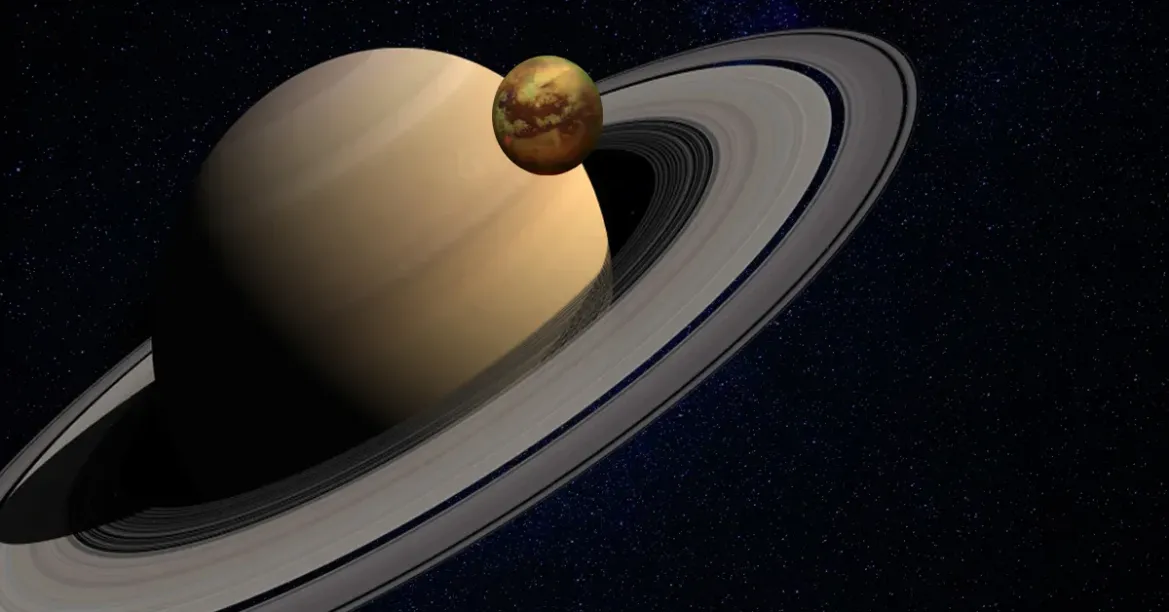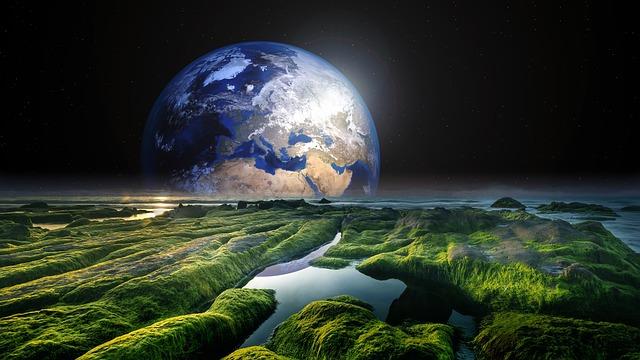The mysteries of Titan: Exploring Saturn‘s largest moon Exploring Saturn’s largest moon, Titan, is a fascinating adventure. Titan is the only moon in our solar system with a thick atmosphere, and it’s the second-largest moon in the solar system after Jupiter’s Ganymede. This moon is unique in many ways and has fascinated scientists for decades. One of the greatest mysteries of Titan is the presence of liquid on its surface. Unlike Earth, where water is the main liquid on the surface, Titan has rivers, lakes, and seas of liquid methane and ethane. These hydrocarbons are essential components of Titan’s atmosphere, […]
Category: Space
The Discovery of Eris: A New Dwarf Planet in our Solar System The discovery of Eris marked a significant milestone in the field of astronomy. In 2005, a team of astronomers led by Mike Brown of the California Institute of Technology spotted a new object in the outer reaches of our solar system. At the time, the object was thought to be a tenth planet, but its classification soon became a topic of debate among scientists. The discovery of Eris was made possible by the use of advanced telescopes and sophisticated imaging techniques. The team used the Samuel Oschin Telescope […]
Eris: The Dwarf Planet at the Edge of the Solar SystemRead More »
Explore the Dwarf Planet Ceres The asteroid belt between Mars and Jupiter is a fascinating region of our solar system, containing millions of rocky and metallic objects. Among them, Ceres stands out as the largest and closest dwarf planet to Earth, with a diameter of about 590 miles (940 kilometers). Discovered in 1801 by Italian astronomer Giuseppe Piazzi, Ceres has captured the imagination of scientists and space enthusiasts alike, who have sent several missions to study its properties and history. In this blog post, we’ll take a closer look at the brief history of missions to the asteroid belt and […]
Introduction Pluto is a dwarf planet located in the Kuiper Belt, a region of the solar system beyond Neptune. Discovered in 1930, Pluto was classified as the ninth planet in the solar system until 2006 when it was reclassified as a dwarf planet due to its small size and irregular orbit. Despite its diminutive size, Pluto has long captured the imagination of scientists and the public alike due to its remote location and unique characteristics. The Moons of Pluto In addition to its surface features and atmosphere, Pluto is also home to five known moons: Charon, Nix, Hydra, Kerberos, and […]
Introduction: Uranus, the seventh planet from the sun, is an ice giant that is often overshadowed by its larger neighbors. This planet is unique in many ways, including its extreme tilt, its blue-green color, and its mysterious weather patterns. In this blog, we will explore Uranus in depth, from its composition and structure to its moons and rings. Composition and Structure of Uranus Uranus is composed mostly of rock and ice, with a small amount of gas. Its atmosphere is primarily made up of hydrogen and helium, but it also contains trace amounts of methane, which gives the planet its […]
Exploring the Mysterious World of Neptune Neptune, the eighth and farthest known planet from the sun in our solar system, is a gaseous giant with a striking blue hue. Discovered in 1846, Neptune is the fourth-largest planet by diameter and the third-largest by mass. Despite being the fourth most massive planet, it has a lower density than any of the giant planets. Neptune is about 17 times the mass of Earth and is almost four times the size of Earth. In this blog post, we will explore the mysterious world of Neptune and learn about its fascinating features. Neptune’s Atmosphere […]
Exploring Neptune: A Journey to the Outermost Ice GiantRead More »
Introduction Saturn is the sixth planet from the Sun in our solar system and is known for its distinctive rings made up of countless icy particles. It is one of the gas giants, meaning that it is mostly composed of gas, rather than a solid surface. Saturn is also known for its many moons, with over 80 currently identified. In this blog, we will explore various aspects of the Saturn planet, including its history, composition, rings, moons, and future exploration. History of Saturn Saturn has been known since ancient times, with the Babylonians observing it around 700 BCE. The Greeks […]
Saturn: Exploring the Wonders and Mysteries of the Ringed PlanetRead More »
Welcome to my blog about Mars, the fourth planet from the Sun and the second closest planet to Earth. Mars has been a topic of interest and fascination for astronomers, scientists, and science fiction writers for many years. In this blog, we will explore the various aspects of Mars, from its physical characteristics to its potential for colonization and exploration. Introduction Mars has always been a mysterious planet. From its reddish hue to its polar ice caps, Mars has captured the imaginations of people for centuries. However, it wasn’t until the 20th century that we began to learn more about […]
The Earth is a fascinating planet, home to billions of species, diverse ecosystems, and intricate natural systems. It is our only known habitable planet in the vast universe, and its beauty and complexity are unparalleled. In this blog, we will explore the Earth’s various features, systems, and phenomena, and discuss the latest research and discoveries about our planet. Here are some of the topics we will cover: Earth’s Formation and Evolution The Earth formed around 4.54 billion years ago from a cloud of gas and dust that surrounded the young sun. Over time, the Earth’s surface and atmosphere changed dramatically, […]
Planet Earth: Formation | Composition | ExplorationRead More »
Exploring Venus: Our Closest Planetary Neighbor Up Close Venus, the second planet from the sun and the closest one to Earth, has always been a fascinating subject of study for scientists and astronomers alike. As the hottest planet in our solar system, Venus presents many unique challenges and opportunities for exploration. In recent years, there have been several missions to Venus, each aimed at shedding more light on this enigmatic planet. From the Soviet Venera missions of the 1970s and 1980s to the recent Parker Solar Probe and BepiColombo missions, there has been a steady stream of data and insights […]
Exploring Venus: The Hottest Planet in Our Solar SystemRead More »











